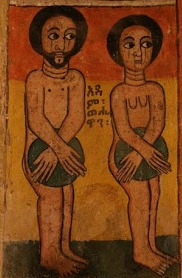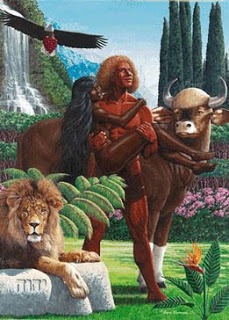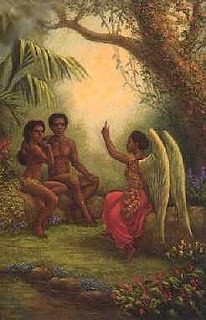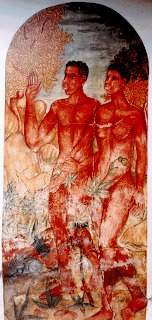Special Notice:
People from over 210 lands regularly visit this site, and the current Firpo File Newsmagazine "Article" found here appears in up to
61 languages (machine translated from English as spoken in the United States) below.
The languages, listed in alphabetical order, are as follows: Arabic ( بالعربية ), Bosnia (Latin), Bulgarian (Български), Cantonese (粵語), Catalan (Català), Chinese Simplified (中国人), Chinese Traditional (中國人), Croatian, Czech (České), Danish (dansker), Dutch
(Nederlands), Estonian (Eesti), Fijian (Fijian), Filipino (Pilipino),
Finnish (Suomi), French (Le français), German (Deutsch), Greek (Ελληνική), Haitian Creole (Kreyòl Ayisyen), Hebrew (עברית), Hindi (हिंदी), Hmong Daw, Hungarian (A magyar), Icelandic (Íslenska), Indonesian (Indonesia), Italian (Italiano), Japanese [日本人〔日本語〕], Kiswahili (Kiswahili), Korean (한국), Latvian (Latviešu), Lithuanian (Lietuvių),
Malay (Melayu), Malagasy, Maltese (Malti), Norwegian (Nordmann), Persian (زبان فارسی), Polish (Polski), Portuguese (Português), Queretaro
Otomi, Romanian (Roman), Russian
(Русский язык), Samoan, Serbian (Cyrillic), Serbian (Latin), Slovak (slovenčina), Slovenian (slovenščina), Spanish (Español), Swedish (Svenska), Tahitian, Tamil
(தமிழ்), Thai (ภาษาไทย), Tongan, Turkish (Türk), Ukrainian (українська), Urdu (اردو), Vietnamese (Tiếng Việt), Welsh (Welsh), Yucatec
Maya.
.
.
.
.
.
Adam and Eve in Africa
Recent scientific
findings regarding the location of Eden
The Firpo Files Digital Newsmagazine
by Dr. Firpo Carr, PhD, Health Psychologist
Member: American Psychological Association (APA)
Division 36: Society for the Psychology
of Religion and Spirituality
Division 38: Society for Health Psychology
Division 40: Society for Clinical
Neuropsychology
Division 48: Society for the Study of Peace, Conflict and
Violence: Peace Psychology Division
Division
52: International Psychology
Religious Scholar, Seminary Graduate:
Master of Arts in Urban Ministry
November
18, 2019
[SPECIAL
EDITION: English only]
.
This illustration of Adam and Eve in the Garden of Eden
graced the front cover of the January 11, 1988, issue of Newsweek magazine. Obviously, the couple is depicted as
being Black. Fifteen years later, a Time magazine cover (March 3, 2003) shows Eve as a Black woman (see below). As
the gallery of portraits that follows this article indicates, other artists in undated works portray Adam and Eve as African.
Does this mean the Garden of Eden, the home of Adam and Eve (Genesis 2:8), was
in fact on the African continent?
Actually, the notion of the biblical Garden of
Eden being in Africa is not new. What is new is the proposed location in Africa.
Where’s that?
Eden’s New Location?:
The answer lies in the first half of the provocatively titled article in the October 31, 2019, issue of The Economist:
“Where was Eden? Perhaps in a sun-baked salt plain in Botswana.” Yes, Africa is still regarded as having hosted
the original Eden, even if Botswana appears to bump Ethiopia (and maybe Kenya too) off its perch as the original home of humanity’s
first couple.
The article maintains that humans “began as an
African species” as “proved in the 1980s by Allan Wilson of the University of California, Berkeley.” Indeed,
the earliest humans “spread over Africa and Asia,” and then “spread to Australia,
Europe and the Americas,” as per the article, and as per the Bible itself (Genesis 9:19; 10:12).
This would explain why what is arguably the oldest
written language (hieroglyphics) and the oldest, most sophisticated manmade structures (the pyramids) are in Africa. It would
also explain why Nimrod--who historians say was a Black African--wanted to build what is thought to be a pyramid-like edifice with its top beyond the tallest trees, which was considered
heaven by past civilizations (Genesis 11:1-4).
Going into more
detail, the article in The Economist further states that “Wilson’s research showed that the family
trees of present-day human mitogenomes, their branches caused by mutations over the millennia, converge in a way which makes
clear that their common ancestor lived in Africa. Hence the nickname Mitochondrial Eve.”
Research since Wilson’s efforts buttresses the scientific conclusion that human life started on the Dark Continent
that continually illuminates our past.
For example, “a group of researchers led by Vanessa Hayes of the Garvan Institute in Sydney, Australia”
suggests that “the mix of evidence, genetic, and climatic” “paint quite a plausible picture” that
modern man began in Botswana.
But, is this conjectured
location fixed in stone?
And do science and
the Bible really agree on Eve?
All About Eve:
The second part of the title of The Economist article reads: “Mitochondrial Eve, an ancestor of all alive now,
dwelt by a vanished lake.”
Fascinatingly, this description of Mitochondrial
Eve--“who is an ancestor of all alive now”--precisely matches the description of the biblical Eve at Genesis 3:20,
which says that she “was the mother of all living” (King James Version).
Yet again, science agrees with the Bible.
Adam Also:
The Economist article says that Mitochondrial Eve “was by no means the first human being,” and then reports
again that “everyone now alive can claim descent from her.”
Incredibly,
that Eve “was by no means the first human being” is completely in sync with what the Bible says. God’s Word
simply states: “For God made Adam first, and afterward he made Eve” (1 Timothy 2:13 [New Living Translation]).
Okay, this is what the Bible says about Adam; but, what does science say about
him?
“What is true for Eve is also true for Adam,”
asserts The Economist article. “Part of the DNA on the Y-chromosome, which is passed unmixed from father to
son, can be used to draw up a similar tree that is also rooted in Africa.” Yes, just as the Bible states, Adam
and Eve were our first parents, and they lived in Africa.
Evolution
or Creation?: Oddly, the scientists mentioned in the article believe human life evolved. But they also believe
humans had a definitive start in Africa with “Adam” and “Eve” (curiously, using the same Bible names),
who the Bible says were created.
But they can’t have it both
ways.
Either we got here by evolution or we got here by creation.
Either you’re pregnant or you aren’t.
You can’t
be almost pregnant, a little pregnant, or kind of pregnant.
And if you’re
thinking that God created us through evolution, think again.
Instead of being
created in the image of any animal, the Holy Writ says that “God created mankind in his own image, in the image of God
he created them; male and female he created them” (Genesis 1:27 [New International Version]).
Make no mistake about it. Jehovah God, the Creator of everything (Genesis 1:1), did not create man and woman in the
image of any animal (1 Corinthians 11:7-9; compare Romans 1:22-23).
Conclusion:
Having visited Botswana, Egypt, Ethiopia, and Kenya, I’m disinclined to believe that Botswana is the original home of Eden as The Economist article
suggests. However, I see any of the other three countries--their modern-day borders notwithstanding--as candidates for the
location of the Garden of Eden, with Ethiopia being the most likely.
Whatever
the case, both Scripturally and scientifically human life began in Africa. And for a certainty, we are all one big human family
and Adam and Eve are our first parents.
Peace and blessings to all. Amen.
.
.
Various artist renditions of Adam and Eve throughout
recent history:
.
.

.

.
.

.
.

.
.

.
.
But why would Nimrod want to build a city and inaugurate an infamous city
hall called the Tower of Babel in the first place?
Stated simply, he wanted to be famous by establishing
not just Babel, but a string of impressive cities (Genesis 10:10-12), all in defiance of God. In fact, Nimrod was the mighty
leader of a group of men who all wanted to make a name for themselves. Building one bustling city, in particular, Babel (Genesis
10:10; 11:9), with a monumental structure, would help them accomplish that purpose.
The Bible record
is clear in telling us that after deliberating, Nimrod proposed to his crew: “Come, let’s build a great city for
ourselves with a tower that reaches into the sky. This will make us famous and keep us from being scattered all over the world”
(Genesis 11:4 [New Living Translation]).
As noted in the main text, the word “heavens” at
Genesis 11:4 in the New International Version was the expanse beyond the tallest trees. An alternate rendering of “heavens”
is “sky,” as can be seen at Genesis 11:4 in the New Living Translation.
In other words,
the Tower of Babel was an ancient skyscraper that may have pierced the clouds!
However, it did not literally
reach the “heavens” no more so than a modern-day skyscraper--like the world’s tallest structure, the Burj
Khalifa in Dubai, United Arab Emirates--literally scrapes the "sky."
Although we now know why
Nimrod wanted to build a city (namely, to be famous), from where did he get this city-building idea?
Apparently he got the original idea from Cain, one of Adam’s sons.
After traveling
and settling east of Eden (also called the “land of Nod” at Genesis 4:16 in some Bible translations), Adam’s
murderous son Cain built a city for his own son, Enoch.
We read: “Cain made love to his wife,
and she became pregnant and gave birth to Enoch. Cain was then building a city, and he named it after his son Enoch”
(Genesis 4:17 [New International Version]). As a proud father, Cain built and named the city after his son Enoch so that both
their names would endure beyond death.
Nimrod, who disobeyed and opposed God as did his ancestor Cain,
took city-building to a new level by orchestrating a symphony of them, as previously mentioned in this footnote. He then went
to the next level by initiating the construction of the tallest building ever.
For a fact, Nimrod preferred
city building over tent-dwelling (Genesis 4:20). Indeed, technology was such that even musical instruments were crafted early
in man’s history (Genesis 4:21). After all, the human brain was still very close to perfection, so city-building and
instrument-making were perhaps far more advanced than we imagine.
To this very day, nations spanning
the globe race to see who can construct the tallest building in the world, thereby making a celebrated name for themselves.
The Oxford dictionary documented that Nimrod’s idea to build the Tower of Babel was ostensibly such a boneheaded
one that the word “nimrod” (small “n”) came to be equated with
“an inept person,” which is the definition of “nimrod” found in that dictionary.
Genesis 11:4 reads: “Then they said, ‘Come, let us build ourselves
a city, with a tower that reaches to the heavens’” (New International Version). There is reason to believe that
the “heavens” mentioned here is the area above the highest trees.
Now, although the Genesis account
doesn’t mentioned trees in this context (Genesis 11), in my travels as an adventurer to countries with pyramids in Central
America (particularly Tikal in Guatemala) and Southeast Asia (especially Angkor Wat in Cambodia) I learned that the tallest
pyramid-shaped structures were strategically fashioned to tower above the highest trees. Geometrically speaking, a pyramid
is a polyhedron constructed by connecting a polygonal base that rises to a tip or apex.
When this
apex or point exceeded the height of the tallest trees, it was thought that heaven had been accessed. That’s why in
Tikal and Angor Wat the pyramids are temples. When inside the temple room apex, the high priest was considered to be in heaven,
in the very presence of God. That the tallest of the original pyramids in Egypt is a pharaonic tomb (a place I found quite
eerie) also has religious overtones.
.